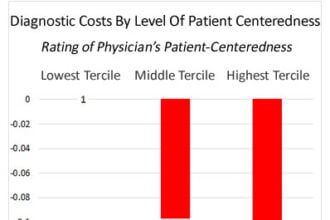 Originally published on MedCityNews.com.
Originally published on MedCityNews.com.  Originally published on MedCityNews.com. Glitches with the new federal health insurance exchange website may have caused some initial setbacks in enrollment, but “navigators” charged with helping people use the exchanges don’t seem to be too worried. Instead, they’re reverting to phones, paper application and follow-ups to get consumers signed up.
Originally published on MedCityNews.com. Glitches with the new federal health insurance exchange website may have caused some initial setbacks in enrollment, but “navigators” charged with helping people use the exchanges don’t seem to be too worried. Instead, they’re reverting to phones, paper application and follow-ups to get consumers signed up.
“Right now our biggest challenge is being able to successfully help individuals enroll through the online exchanges,” said Dizzy Warren, community outreach manager for Michigan Consumers for Healthcare, one of Michigan’s four recipients of navigator grants. Healthcare.gov was generating error messages for the first several days after its Oct. 1 launch and was taken down for maintenance over the weekend.
In the absence of a functioning website, navigators have been using other tactics to get people signed up. “Our organization seems to be having the most luck enrolling people over the phone,” Warren said. And for those people who aren’t comfortable enrolling in insurance over the phone, navigators have been scheduling appointments to follow up with them next week. “Apparently, from what we’ve heard, these glitches are being worked on.”
With 27 states using the federal exchange website, Warren said it was likely an overload of traffic that was causing problems on the site. I logged on this morning and was able to create an account, but ran into issues during the “confirm your identity” step when the system seemed to think I was someone else.
Jill Hanken, a health attorney at the Virginia Poverty Law Center, said that outreach by her organization, which also received a grant to recruit navigators, has not slowed down despite the glitches. “This actually gives us a little bit of extra time to provide educational information so people are more prepared to file their applications,” she said.
For Virginians who are anxious to get the process started, Hanken said some navigators have been providing paper applications to people. Reports out of Maryland have indicated navigators there have done the same thing.
Warren was confident that the slow start wouldn’t deter people from enrolling. Her organization has been instructing its navigators to listen to people’s problems and concerns about using the website, and then take a step back and explain the magnitude of the situation.
“There’s not this huge rush for everyone to go online and become enrolled in the first two weeks,” Warren said. “We’re trying to help them understand that this is just the beginning.”
“All of our phones are ringing off the hook, even beyond regular business hours,” she added.
Open enrollment through the exchanges continues through the end of March. In order for coverage to start Jan. 1, people need to be enrolled by Dec. 15.
[Image credit: Flickr user Thomas Hawk]






